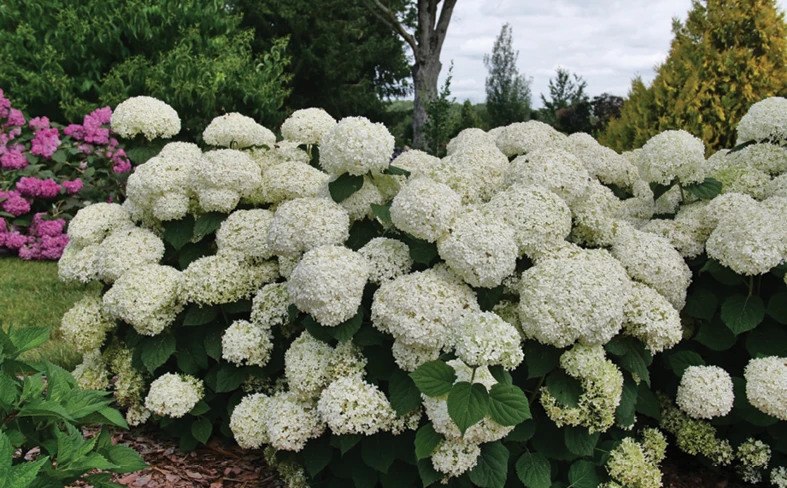Ornamental growers across the country need to be concerned with the management of irrigation water as fresh waster is depleted on a global scale. In anticipation of water restricting regulations, several growers in New Jersey have taken pro-active steps to reduce their dependence on fresh water by investing in recycling technology. This article highlights the costs and benefits of disinfecting and recycling irrigation water in a small-scale nursery using chlorine gas. This is the third story of a four-part series regarding nursery production and irrigation management.
 Frank Loew, owner of Loew’s Nursery in Bridgeton, N.J., didn’t have a water availability problem, but he did have a water containment problem. He was determined to capture the runoff from his nursery and reduce water waste.
Frank Loew, owner of Loew’s Nursery in Bridgeton, N.J., didn’t have a water availability problem, but he did have a water containment problem. He was determined to capture the runoff from his nursery and reduce water waste.
“Back in 2000 they [other growers in the area] were saying you were going to have to contain all of your water and I just wanted to stay ahead of it,” Frank says. “At that point I wanted to take advantage of the funding available and do it then.”
The funding he refers to is the cost-sharing he received from the Natural Resources Conservation Service (NRCS), a federal program that offers financial and technical assistance to help manage natural resources.
“My individual situation is lucky because I’m not surrounded by anyone where my runoff goes on to, but I know other nurseries in the area have had trouble where runoff goes onto a neighbor,” says Frank.
He says that at one time there were 150 gallons per minute of water running off their property into the Cohansey River.
“I didn’t want to lose the water, and didn’t want to keep pumping it out of the ground and wasting it,” Frank explains.
He recalls that his plan was solidified after participating in a research project at Rutgers Cooperative Extension with Matin Chowdhury, Chris Obropta and Peter Strom. The study analyzed water samples from before and after the nursery discharge point, and revealed that the overall quality of the river was the same. However, the amount of total phosphorous in the water was slightly higher after the discharge area. This was not an illegal level, but the study alerted them to the impending problem.
Frank built a tail-water recovery system to collect his runoff.
|
Generations of growers Currently, the nursery grows 400 varieties of plants within an environmentally conscious operation that includes solar power, composting and recycled water. |
“Everything goes down stone waterways and runs down to two low spots on the farm we call the North and South basins. Water trickles through the stones and that filters it a little bit, then it goes into the pond. From there it’s picked up, pumped out, and goes through the chlorination system,” he explains.
This water is pumped and treated with chlorine gas so there is 1 ppm at the last nozzle using pressure regulator valves. Chlorine was the only option he was familiar with at the time of initial construction, and he felt comfortable with this potentially hazardous application because of his training as a firefighter. This water is immediately used to irrigate and is not filtered or supplemented with fertilizer because they use controlled-release fertilizers.
The initial cost of this investment was $112,000 in 2000, but 50 percent of the cost was paid for by the NRCS. Maintenance includes replacing the tanks of chlorine gas annually and recalibrating the meters every other year, for an average combined yearly expense of about $3,000.
Pros and cons
There have been a few challenges with chlorine treatment. After initial application of the chlorine, Frank recalls that a few plants did not respond well to the chemically treated water, including ‘Crimson Pigmy’ barberry and certain types of Spirea. Now he only uses fresh water on those varieties. Additionally, there was an issue with Diuron, an herbicide used between the greenhouses that moved with the runoff into the retention basins. This exposed the plants to the herbicide when that water was pumped through irrigation, which was an unintended consequence. In 14 years they have only had one chlorine leak, which Frank was able to handle himself because of his firefighter experience. The nursery is currently faced with a challenge to control a new area of runoff that developed due to expansion of the nursery, after initial construction of the tail-water recovery system.
Aside from these issues, the chlorine disinfection and recycling system at Loew’s is a fairly low-cost operation that has proven to be reliable and useful. The grower’s fertilizer costs have been reduced by approximately $5,000 annually. They have avoided the expense of drilling two new wells to maintain a pump capacity of 50 million gallons per year, which is a significant expense for a nursery of this size.
 “Another benefit is less algae clogging up our pipes due to the chlorine. We have less algae in the houses where we use the treated water,” he says, which will increase the lifetime of the nursery’s infrastructure. Frank reveals that one of the biggest benefits of the water recycling systems is that they now have two sources.
“Another benefit is less algae clogging up our pipes due to the chlorine. We have less algae in the houses where we use the treated water,” he says, which will increase the lifetime of the nursery’s infrastructure. Frank reveals that one of the biggest benefits of the water recycling systems is that they now have two sources.
“Before we put those in, we were running small zones at a time and watering 8-10 hours every day. Once we put the basins in we can do it in three hours and only need to do it every other day. It saves manpower and time.”
Loew’s Nursery has been able to market itself as an environmentally conscious operation through responsible water management, solar power use, and composting efforts. Frank has some advice for other growers.
“Plan ahead because I didn’t for the houses in the back, where I’m losing some water now. When I put the ponds in, I planned for here and now and I didn’t plan for 10 years down the road. I would say to look forward 10 years to what you might do then to help decide where to put your ponds and how to set up the land.”
He is pleased with his system overall and encourages other growers to consider making an investment into recycling water and preserving this valuable resource.

For more: www.loewsnursery.com

Explore the February 2015 Issue
Check out more from this issue and find your next story to read.





